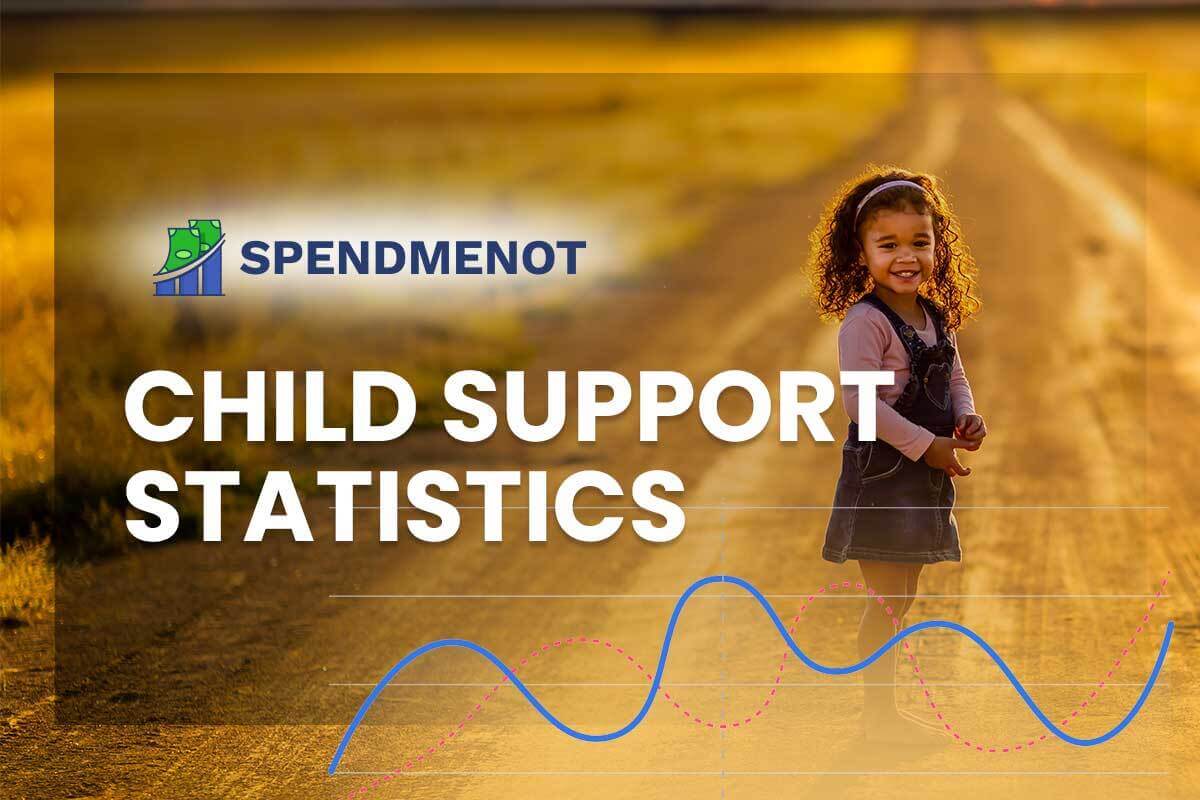25+ Fintech Statistics You Need To Know in 2023
Last Updated: March 10, 2023
With innovative software, hardware, and networks, fintech has managed to attract millions of consumers. It continues to have a huge impact on how businesses are run and how much they will develop in the future.
Fintech statistics show that fintech companies are some of the fastest-growing businesses in the world. It’s a booming industry, and plenty of non-related businesses can benefit from partnering with fintech companies. Some of the largest public companies in the financial sector have their own fintech initiatives that may change the way they do business.
Sounds too good to be true?
We’ve prepared some fintech statistics and facts to prove our point:
Fascinating Fintech Facts (Editor’s Choice):
- Almost 40% of financial companies consider investment in blockchain important for the fintech industry.
- Apple pay makes up 92% of the mobile wallet transactions in the US.
- Fintech was worth $5.5 trillion in 2019 globally.
- The biggest fintech company in the world is Ant Group, boasting a net worth of over $313 billion and providing more than 10,000 jobs.
- 37% of financial service organizations offer fintech-based products or services.
- 23% of US consumers use the services of fintech companies.
Let’s start with a basic overview of the industry.
General Stats
1. A survey found that 52% of respondents in the US have never heard of open banking.
(Source: Axway)
Open banking is one of the premier fintech services, and statistics show that only half of the US population is familiar with it. Fintech in the US still has plenty of room to grow, as 84% of people interviewed agree with a central principle of open banking of having control over their financial data.
2. In 2021, nearly 2.5 billion users access retail banking services digitally.
(Source: Juniper Research)
How many people are using fintech services?
Almost a third of the world’s population access their banking services through their computers, smartwatches, tablets, and smartphones. This number is expected to increase to 4.2 billion by 2026.
3. 37% of financial service organizations have fintech-based products or services available to their customers.
(Source: PwC)
Fintech retention rate statistics show that even established firms continue to focus on internal innovation.
Focusing on great ease-of-use and user-friendly product designs can encourage consumers to stay. Using blockchain technology and artificial intelligence is a sure-fire way to keep customers.
Fintech Adoption by Industries, Banks, and Consumers
Fintech is growing in popularity, and more and more users are adopting it due to the sheer convenience it provides. And fintech statistics also show that it’s bringing value to businesses that are introducing their own fintech initiatives.
4. 94% of financial services companies are confident that fintech will drive growth over the upcoming years.
(Source: PwC)
This holds more true for organizations with an embedded fintech strategy, as they are more likely to be very confident that fintech will deliver revenue growth over upcoming years. The companies with a formal strategy that isn’t fully embedded have a lower degree of confidence.
5. 47% of traditional financial companies plan to increase collaboration with fintech companies.
(Source: PwC)
Fintech adoption statistics show that the banking industry’s response is to increase collaboration to avoid the risk of losing revenue. FS executives view fintech collaboration as a way to gain access to technology and innovation.
Innovation is key to survival, and the banking sector is increasingly investing in fintech and cooperating with other financial institutions.
6. A survey discovered that 25% of customers are willing to try new banking services.
(Source: Capgemini)
A quarter of US consumers are interested in trying financial products from Fintech and Bigtech companies. Around 70% of them cite faster delivery, personalized services, and better accessibility as primary reasons for switching.
7. 57% of banks are in the process of building a digital-only subsidiary.
(Source: Banking Circle)
Financial reporting services have recorded that traditional banks don’t want to be left in the dust. Over half intend to develop a digital-only subsidiary, with 30% just starting the process and 27% already in the planning phase.
Fintech startups can benefit from partnering up with banks to develop such solutions. They can bring new models and theories to the forefront while banks bring resources and expertise in the financial sector.
8. Gen Zers and Millennials are the likeliest to have multiple financial technology accounts.
(Source: McKinsey)
Around 7% of both Millennials and Gen Zers have five or more fintech accounts. This is contrasted with only 3% for Gen Xers and none for Baby Boomers. Of course, the younger generations are also the likeliest to have a fintech account — over half (52%) of Zoomers have at least one. Millennial fintech statistics show they’re close behind at 47%. The older generation is progressively further behind, with 36% of Gen Xers and 24% of Baby Boomers using fintech services.
9. 75% of financial services organizations are creating jobs related to fintech.
(Source: PwC)
However, they’re also struggling to fill those positions and are dealing with a chronic workforce shortage. Attracting new employees from the technology sector will be crucial for the industry’s long-term prospects.
10. Traditional banks are still considered more trustworthy than fintech companies.
(Source: McKinsey)
But the gap is shrinking. Fintech consumer adoption statistics show that 27% of users trust fintech companies more than financial institutions, while 30% say the same about traditional banks. That is a very narrow gap, and fintech is in the strong lead with multiple other factors, including ease of use and convenience.
11. 42% of financial decision-makers have a fintech account.
(Source: McKinsey)
Over four in ten surveyed financial decision-makers say they have at least one account with a fintech company. Fintech usage increased by six percentage points during the covid pandemic, and it’s likely to increase as time goes on.
Global Fintech Market Share
Fintech isn’t used everywhere equally. Fintech industry analysis shows that the Asia-Pacific market dominates, but it’s closely followed by North America and Europe.
12. The global market size for fintech was valued at $5.504 trillion in 2019.
(Source: GlobeNewswire)
It’s expected to continue growing at a CAGR of 23.58% until 2025. The spike in fintech industry worth can be attributed to investments in technology-based solutions. Asia-Pacific is the dominant region with a 49.45% market share, and it’s expected to maintain its dominance in the upcoming years.
13. Ant Financial, a Chinese Fintech Giant, Raised $14 Billion in Investments in 2018.
(Source: Reuters)
This was a record for money raised by the fintech industry as well as a record in investment history. Ant Financial (now Ant Group) is responsible for providing digital payment services to over two billion people. The company is currently worth $313 billion.
14. Fintech firms are used by 23% of all US consumers.
(Source: McKinsey)
A fintech industry report shows that all fintech sectors have experienced growth during the covid pandemic.
Digital lending experienced a 25% increase (from 3% to 5%), followed by investing at 23% (from 6% to 10%). Banking increased by 21% (from 17% to 23%), and payments were always widely adopted and increased by only 7% (from 12% to 16%).
15. The global mobile payment market reached almost $1.5 trillion in 2019.
(Source: Allied Market Research)
Fintech market research shows that the global market for mobile payments is increasing at an incredible rate.
After hitting $1.48 trillion in 2019, it’s expected to continue growing at a CAGR of 30.1% and reach $12.06 trillion in 2027.
Fintech Trends
Fintech is definitely changing the way we do business and how we interact with money. Let’s have a look at the fintech industry overview and see what is popular and what we can expect from fintech trends.
16. In-store mobile payments usage grew 29% during 2020.
(Source: Insider Intelligence)
These transactions are expected to surpass 50% of all mobile users by 2025.
Additionally, the average annual user spending will grow 23.6% by the end of 2021 to $2,439.68. It’s now on track to exceed $3,000 by 2023.
17. Apple Pay makes up 92% of the mobile wallet transactions in the US.
(Source: TalkAndroid)
That’s despite the fact it only holds just over a third of the market share. However, Apple users are much more willing to use their mobile wallet system and that gives the company a decisive advantage.
Fintech growth trends show that there is a lot of room for development in the mobile market, as both Samsung and Google need to work on increasing customer confidence.
18. More than 92 million people used proximity mobile payments in 2020.
(Source: Statista)
This was an estimated 29% increase from 2019. Back then, around 71.5 million people used mobile payment services. This number is expected to continue increasing and reach 125 million by By 2025.
19. In-store mobile payments for the US are set to hit $125 billion in 2025.
(Source: Insider Intelligence)
Fintech future trends show that mobile payments are expected to rise significantly.
No surprise, given how convenient they are for users. These solutions are essential to banking and other financial institutions. Customers are increasingly choosing fintech options for their payments.
20. The global use of mobile wallets is set to see a CAGR increase of 11.7% in 2025.
(Source: GlobeNewswire)
That is a significant increase and will encompass almost 5 billion people.
Mobile payments will surpass the use of cash and credit cards and will likely become the second most common method of payment after debit cards.
Fintech Startup Statistics
Fintech startups have been massively popular and a veritable magnet for investments. 2021 has been record-breaking in many aspects, and the trend doesn’t seem to be slowing down.
21. The 96 VC-backed unicorns in the fintech market have a combined worth of $404 billion.
(Source: Fintechnews)
Before we continue, a little clarification — a “unicorn” in this context does not mean the glorious mythical horse. It’s a privately held startup company worth over $1 billion. Not as glamorous, but still pretty neat.
By early 2021, there were almost 100 such companies, and 46 were from the US. Fintech unicorn statistics show that the highest value unicorn is Stripe; this company is worth $95 billion.
22. The first half of 2021 saw a record-breaking $52.3 billion VC investment in fintech.
(Source: KPMG)
It appears that 2021 is shaping up to be a great year for fintech companies. The value of global VC investments is more than double for the same period of the same year. US fintech startups did particularly well — they received 25$ billion in VC investments during H1 2021.
23. AI technology is set to increase profits by almost 40% by 2035.
(Source: Accenture)
This could lead to a massive $14 trillion increase in profits!
It will affect 16 different industries and 12 economies.
This is amazing news for any fintech business!
Financial technology companies should continue to develop their fintech artificial intelligence systems to get a chunk of this projected profit.
Fintech Job Statistics
Any industry growth means an increase in demand for specialized jobs. Fintech is no different. Have you ever wondered how many fintech jobs are there?
Let’s find out.
24. 23% of seasoned AI adopting companies have a major or extreme shortage of AI experts.
(Source: Deloitte)
This is a higher percentage than less mature organizations, but AI talent shortage is felt across all spectrums, with 96% of starter enterprises having at least some degree of unfulfilled expert demand.
That means there are plenty of Fintech companies in need of good AI specialists.
25. The average annual fintech salary in the US is $125,000.
(Source: Talent.com)
That equals $64.10 per hour, which puts it way ahead of the average salary in the US. Now, before you get too excited and start sending out our resume, entry-level positions in the industry are expected to fetch $85,000 on average per year. At the other end of the spectrum, an experienced professional is likely to make $183,536.
Blockchain-Based Fintech
26. 40% of financial service companies cite the adoption of blockchain in fintech as an important goal.
(Source: PwC)
Fintech innovation is expected to benefit the global financial system.
The global financial sector that is currently dependent on manual networks can expect that the change to blockchain implementation will have a significant impact.
27. Blockchain firms experienced record levels of investments in H1 2021, totaling $8.7 billion.
(Source: KPMG)
Fintech firms are experiencing a surge in Blockchain solution investment. After a dip in 2019 and 2020, the amount invested in the first half of 2021 rose to more than double for the entire previous year.
Conclusion
New replaces old. It is a tale as old as time.
The digital age is quickly pushing past the old world, causing immense disruptions in almost every industry.
As the new decade begins, we’ll experience increased integration of financial technology and solutions into modern life as we know it. The global financial sector is no different.
These fintech statistics show that companies need to prioritize fintech innovation. Otherwise, they risk getting left behind in the dust. The biggest fintech trends focus on include extended-reality, artificial intelligence, mobiles, and blockchain, as shown above.
So be smart, be adaptive, and use those stats to your advantage.










